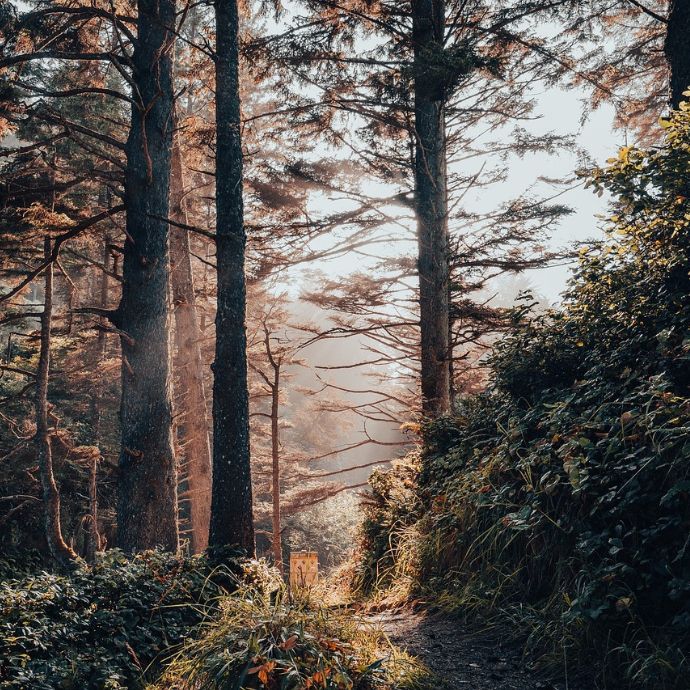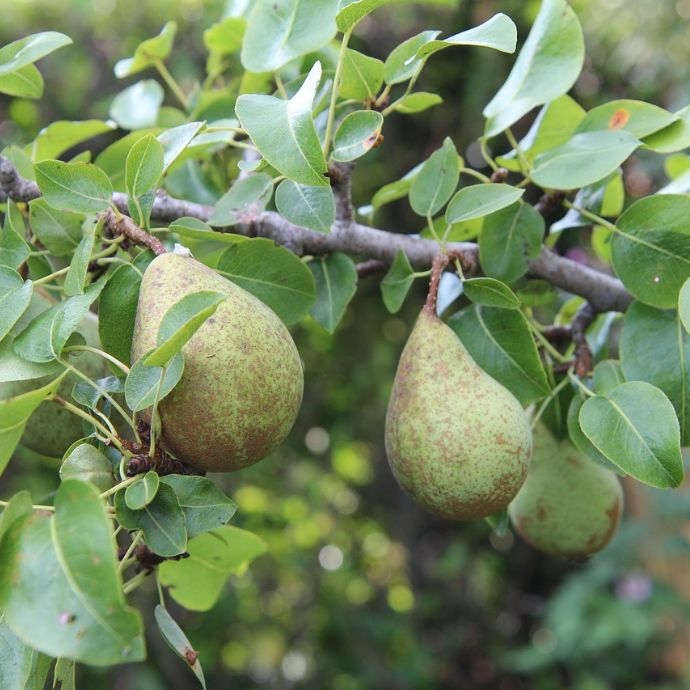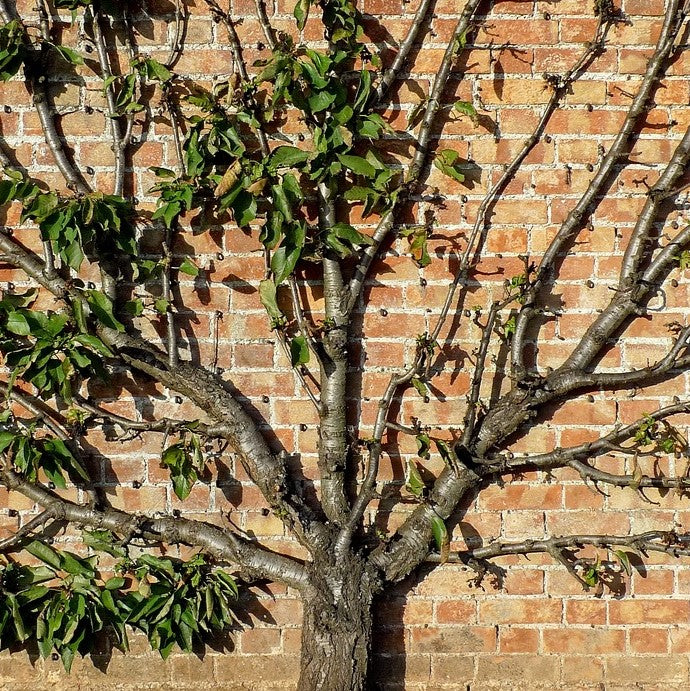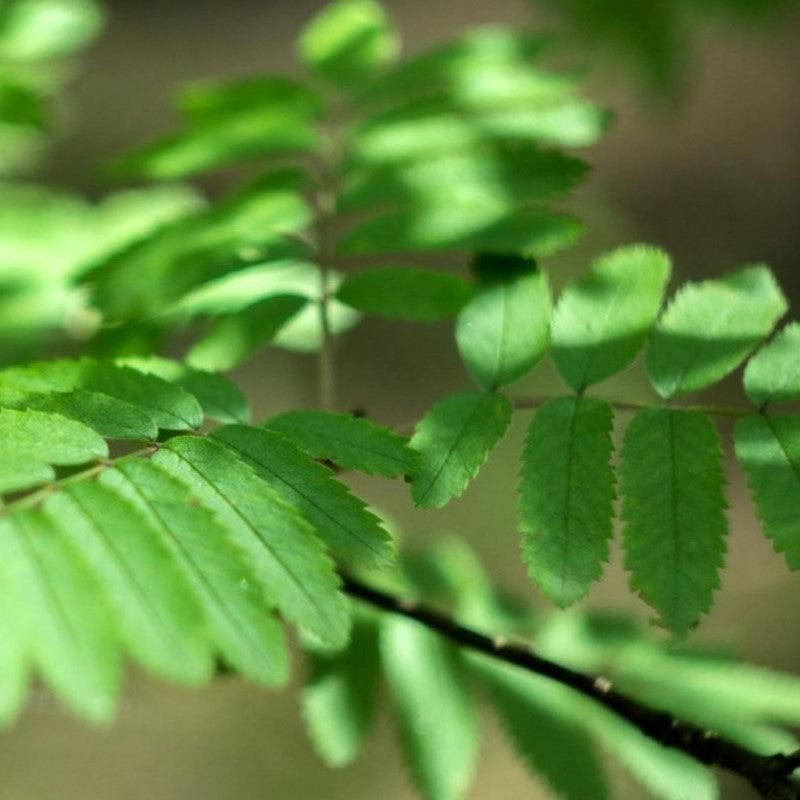Advice & Inspiration
How to Make a Patio Pond
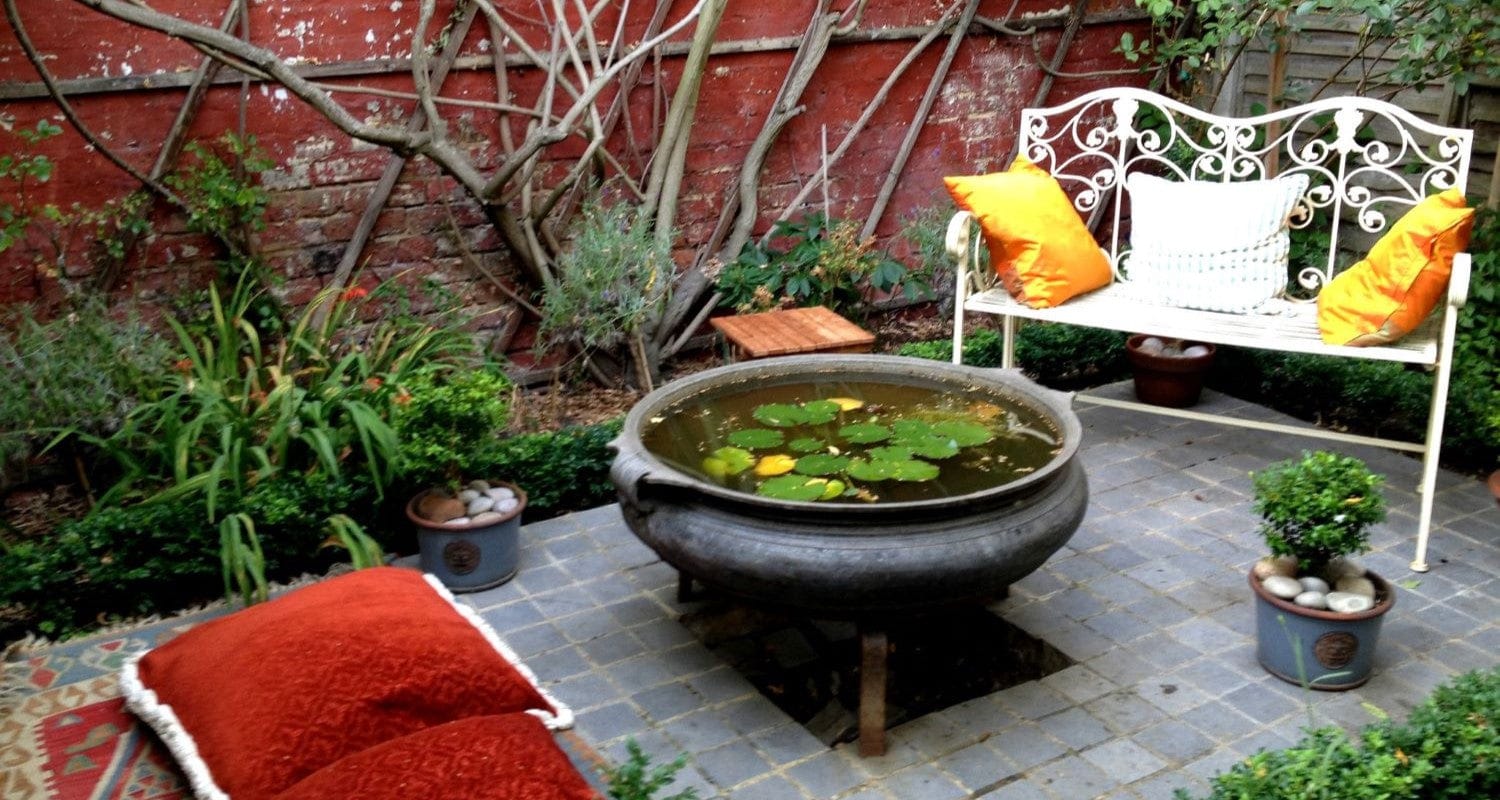
Five easy steps to building a mini wildlife pond in a container
Making a patio pond is surprisingly easy and can help attract frogs, dragonflies, birds and other wildlife to your garden. It’s an impressive looking addition to a patio, border or balcony which makes a relaxing focal point in your summer garden and requires next to no maintenance.
What do you need?
- A watertight container
- Gravel or slate chips
- Bricks or large stones
- Pond plants
- Planting baskets
- Compost
- Water
- A piece of wood
How long will it take?
I was really surprised how little time this project took - once I’d gathered together everything I needed, assembling it took around half an hour. Not bad for something that will give so much pleasure and benefit wildlife too. It’s suitable for beginners and with supervision, would make an ideal project for children. Follow our step by step guide to building your own pond in a pot.

1. Suitable containers for patio ponds
You’ll need a clean container with no holes, at least 60cm across and 40cm deep.
You don’t need to buy one specially - you can upcycle an old sink, bucket, washing up bowl, plant pot or wheelbarrow. Mine is a spare rubble bucket! Avoid unglazed terracotta pots as they’re porous and will allow water to seep out over time, and if you need to clean your container, use soap and water only, avoiding strong detergents and bleach. If your container has holes in it, you can seal these up with waterproof putty from a DIY shop. Allow it to dry thoroughly before filling your pond.
2. Where to position your patio pond
The best place for your pond is in a moderately sunny part of the garden where it won’t get knocked over. Positioning it near bushy foliage will encourage small mammals, birds and amphibians. Make sure the ground is level - or you can sink it into a hole in the soil if you prefer. These ponds are great for patios or near seating areas where you can enjoy a good view of them and the wildlife that they attract.
3. Preparing your patio pond
First, make a layer of small stones or gravel at the bottom of the pond. If they’re muddy, give them a wash first. I used slate chips that the previous owners of my house left behind.
Then add some bricks or large stones around the edges - these will raise your marginal plants to the right level, where their roots can be in water and their foliage above the surface. If your container is very shallow you may not need the bricks, but if you add a stone which just breaks the surface of the water, it will attract garden birds to drink and bathe.
4. The best plants for patio ponds
I chose five plants for my pond, but you can use as few as one or two, depending on the size of your container - you don’t want to overcrowd it. If your plants arrive in regular pots, gently remove them and plant them in an aquatic planting basket (a pot with holes in) filled with compost, with a layer of gravel around the plants. Native plants are usually best for attracting wildlife. You’ll need a good mixture of plant types, including the following.
Oxygenating plants
Oxygenators are essential for a healthy pond. They keep the water clean and clear, while reducing algae - so there’s no need for a pond filter or pump. They also provide shelter for amphibians. Some need to be planted at the bottom of the pond and others like to have the tops of their foliage above water, so do check the plant label. They certainly get to work quickly - mine were producing bubbles minutes after I filled up the pond! Some good oxygenators for small ponds include Fibre Optic Plant, Frogbit and Water Crowsfoot.
Marginal plants
Marginals are the plants around the pond edges, and need to be planted so that all of their foliage is above the surface. If your pond is to be viewed from one direction, position your marginal plants at the back, but if it’s going to be viewed from all sides, they’re best placed in the middle. Tall marginals are essential for attracting dragonflies and damselflies (they lay their eggs on them and use them as a perch), bushy ones provide shelter for emerging froglets and flowering marginals attract pollinating insects. Some of my favourites are Creeping Jenny, Ragged Robin and Yellow Flag Iris.
Floating plants
Floating plants such as water lilies are the crowning glory of a mini pond, but as well as looking beautiful, they prevent the growth of algae and provide shade and shelter for frogs as well as a resting place for thirsty insects. Make sure you choose a dwarf variety! These are deep water plants, so they need to be planted on a shelf initially, then lowered to the bottom of the pond as their roots and stems grow. As well as dwarf or pygmy water lilies, Water Hawthorn and Yellow Floating Hearts also look great.
5. Filling your patio pond
I thought this would be much more complicated - I’d heard that you need to collect rainwater in buckets, because tap water is too full of chemicals. Turns out that’s a myth, as after a day or two, any chemicals will have evaporated without harming the plants. If you do have clear rainwater in a water butt or similar, that’s great - but if not, just use the hosepipe. Your pond will soon naturalise and develop its very own balanced ecosystem. Fill up your pond to around ⅔ full or 2-3cm below the rim of the container, depending on the depth of your plants, and your pond is complete.

Can you keep fish in a patio pond?
We don’t recommend it - fish need more space to live in. They also tend to make the water murky and eat all your plants! Patio ponds get too hot and don’t provide enough foliage for them to shelter in, which makes them a target for predators like herons. It’s not a good idea to transfer creatures from another pond either - this can spread diseases. But don’t worry - if you provide the right conditions, the wildlife will come and your mini pond will soon be full of life.
How to make a patio pond safe
When making a patio pond you should take into account the safety of children, pets and wildlife.
Children
If your children or grandchildren are very small, you should always supervise them around even shallow water. A nice alternative for little ones is to make a bee bath - simply fill a shallow bowl or saucer with water and add marbles so the bees have somewhere to perch. Plant pollen and nectar-rich flowers around your bee bath to make a handy rest stop for hard-working insects.
Pets
Tell your cat it’s a pond, not a kitty water bowl! In all seriousness, dogs and cats should be fine with a raised pond such as this, but if you have small, free-ranging pets such as guinea pigs or rabbits, you may want to put a barrier such as a fence around your pond and/or a net over the top to prevent any accidents. Read more about pet-friendly gardening.
Wildlife
To avoid any small mammals drowning in your pond, it’s vital to add a ramp. This can be made out of a piece of wood but should be rough textured so that little legs can cling to it. If you have hedgehogs visiting your garden and are worried about them wandering into the pond, you can cover it with some netting.
How to care for your patio pond
Container ponds need very little maintenance - you certainly won’t have to water these plants!
If you have enough oxygenators, you probably won’t have to worry about cleaning algae out of it either. If any does build up, just remove it with a small fishing net (like you used to have at the seaside). Any pruning should be minimal.
If the water evaporates too much in dry weather, just top it up with a watering can, and if your pond is near any deciduous trees or shrubs, you might want to cover it with a net in the autumn, to avoid scooping out leaves. And that’s about it really - just sit back and enjoy!
The plants I used
- Yellow Monkey Flower Mimulus guttatus - marginal
- Mini Bulrush Typha minima - marginal
- Upright Water Milfoil - oxygenator
- Brazilian Microsword Lilaeopsis brasiliensis - oxygenator
- Dwarf Water Lily Nymphaea Xiafei - floating plant
Discover more pond plants.
Top image source: Flickr.
